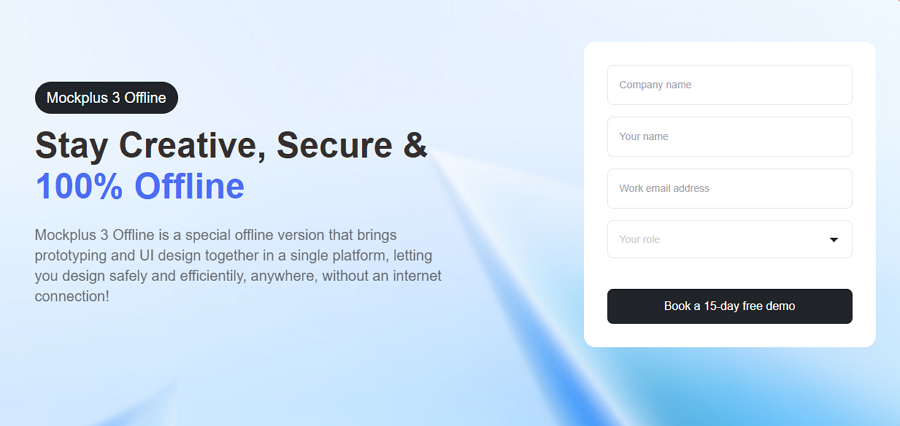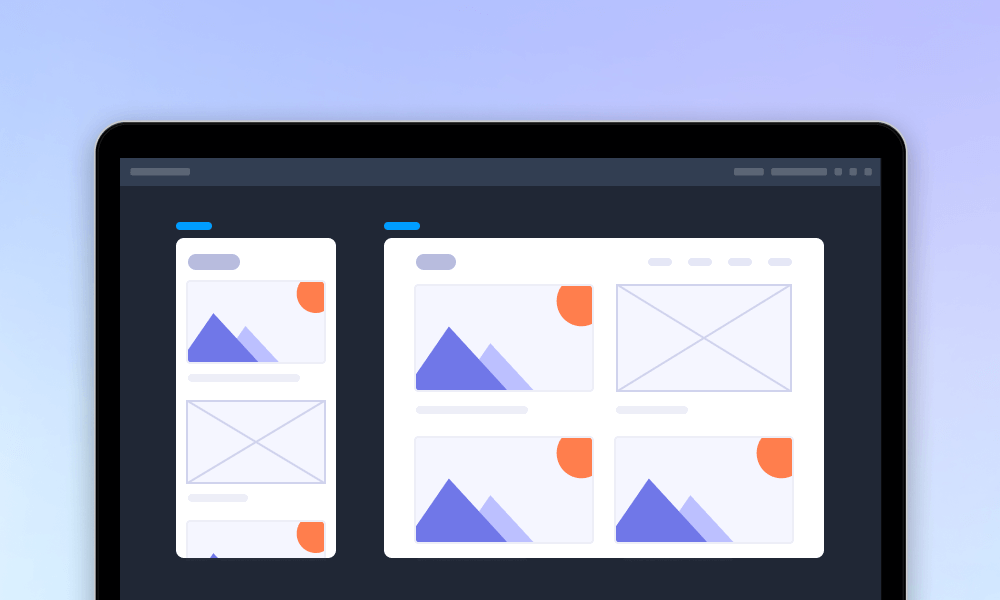
Let's imagine this: your design team is deep into a major project. Ideas are flowing, prototypes are coming to life—then suddenly, the Wi-Fi drops. Or perhaps you’re working on a client’s secure network that blocks access to online tools altogether. Sound familiar?
Moments like these reveal just how fragile a fully cloud-based workflow can be. That’s why more and more large teams and enterprises are starting to explore offline UI/UX design solutions—tools that keep creativity moving no matter the connection status.
In this post, we’ll uncover the top 5 signs that your design team is ready for an offline UI/UX design tool. From maintaining productivity and protecting sensitive data to designing on the go, you’ll discover why going offline might be one of the smartest moves your team can make this year.
Offline design tools, as the name suggests, are UI/UX design tools that work entirely without an internet connection. Unlike cloud-based tools such as Figma, which rely heavily on online collaboration and cloud storage, offline tools let you design, prototype, and manage your projects locally on your device—giving you complete control over your files and workflow.
If you’re working on a sensitive project or within a restricted network environment, using an offline design tool can save you time, reduce security risks, and keep your creative process uninterrupted.
While using online design tools like Figma, have you ever been in the middle of an important design session only to find the internet slow, unstable, or completely unavailable? Or maybe you’ve tried working in a café, on a flight, or outdoors—only to realize the network is spotty or completely dead. It’s frustrating when files fail to sync, updates are delayed, or you can’t access your project at all.

Don’t worry! A good offline design tool lets you work uninterrupted, no matter where you are, so your team can stay productive and creative even without an internet connection.
For companies working with government, financial, or military clients, it’s common to deal with highly sensitive information—whether it’s unreleased product designs, proprietary UX research, or client assets under strict NDAs. Using cloud-based tools in these cases can feel risky, since your files are stored on external servers and could be vulnerable to accidental leaks or unauthorized access.
Offline design tools allow your team to store everything locally, giving you full control over your projects. This way, you can design confidently and securely, knowing all your sensitive data stays private at all times.

Sign #3: Your Design Process Requires Speed and Instant Performance
In daily workdays, when you are working under tight deadlines, every second counts. Cloud-based tools can sometimes feel sluggish—waiting for large files to sync, loading complex components, or handling multiple team updates at once can slow down your workflow. These delays can disrupt your creative flow and make it harder to keep up with fast-moving projects.
Offline design tools, on the other hand, without downloading and requesting data from the cloud server or similar, run directly on your local devices, delivering instant performance and smooth operation even with complex prototypes or high-fidelity designs.
So, you can focus entirely on creating and iterating.
Some teams operate in environments with strict IT policies or heavy regulations—like government offices, financial institutions, or corporate networks with limited external access.
In these settings, cloud-based design tools can be blocked or restricted, making it difficult to access files, collaborate, or even launch the software when you need it most.
Offline design tools solve this problem by allowing your team to work entirely within the local network or on your devices. This ensures that projects stay on schedule, team members stay productive, and compliance requirements are always met—without compromising workflow or security.
When working on complex projects, keeping track of file versions, updates, and team access can quickly become a headache. Cloud-based tools handle some of this automatically, but they can also make it harder to control exactly who sees what or to revert changes instantly when needed.
Offline design tools give your team complete control over files and versions, letting you manage access, store projects locally, and maintain a clear audit trail. This not only reduces mistakes and confusion but also ensures your design process stays organized, secure, and fully under your team’s control.

Save everything locally for full control

For design teams looking to stay productive without internet dependency, Mockplus 3 Offline offers a complete solution. It combines all the features you need for UI/UX design—wireframing, prototyping, testing, and delivery —directly on your local device, ensuring fast performance and uninterrupted workflow.
Key features of Mockplus 3 Offline
Whether your team works in restricted networks, handles sensitive projects, or simply needs full control over files and versions, Mockplus 3 Offline delivers the flexibility, security, and reliability your projects demand. With a user-friendly interface and robust offline capabilities, your team can focus on creating great designs anywhere, anytime, without compromise.
It is regarded as the best offline alternative to Figma, Axure, Sketch, Adobe XD and similar UI/UX design tools.
1.What’s the main difference between offline and cloud-based design tools?
Offline design tools run entirely on your local device, while cloud-based tools rely on the internet for file storage, syncing, and collaboration. Offline tools give you full control over your files and allow work without network dependency.
2.Are offline tools slower to update or maintain?
No. While using offline design tools like Mockplus 3 Offline, updates for them may require manual installation, but once installed, you can easily run faster and more smoothly since they don’t depend on internet speed or server performance. So, in this way, your offline tools can always stay up-to-date.
3.Can I move my Figma or XD files into an offline tool?
Yes. Take the offline tool, Mockplus 3 Offline, as an example, you can feel free to import Figma, Sketch, Axure and Adobe XD files for further editing and evolving.
4.How do I share my offline designs with clients?
Offline tools typically let you export files in common formats (PNG, PDF, HTML, etc.) or generate shareable packages. Some also support optional cloud syncing for collaboration when needed.
For example, Mockplus 3 Offline lets you export web or app designs as an HTML demo package, so you can directly present the project or even interact with the demo to showcase all interface elements and interactions in detail, all without an network connection.
5.Do offline tools still include AI-powered or automation features?
No. Most AI-driven features require an internet connection, so offline design tools typically don’t include AI or cloud-based automation. However, many offline tools still offer robust design, prototyping, and workflow features to keep your projects moving efficiently without relying on the internet.
Anyway, if your design team has experienced any of the top 5 signs—frequent internet issues, handling sensitive projects, needing speed and instant performance, working in closed or regulated environments, or wanting full control over files and versions—then it’s clear that an offline UI/UX design tool could significantly improve your workflow.
We hope these signs, along with recommended tools like Mockplus 3 Offline, help your team make the best design decisions for this year and beyond, saving time, effort, and frustration along the way.
 Mockplus RP
Mockplus RP
A free prototyping tool to create wireframes or interactive prototypes in minutes.
 Mockplus DT
Mockplus DT
A free UI design tool to design, animate, collaborate and handoff right in the browser.
